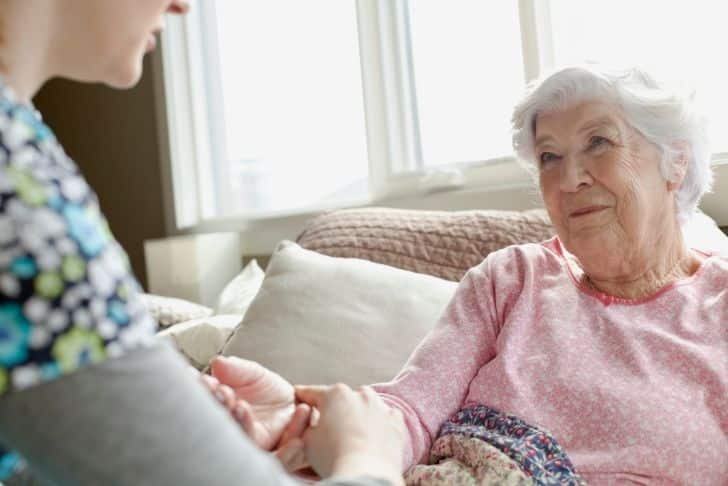Caring for someone with Alzheimer’s or related dementias brings unique responsibilities, and in “Guidelines for Caregivers Dealing with Alzheimer’s and Related Dementias,” you’ll find a comprehensive roadmap to help navigate these challenges. This guide highlights the significance of everyday routines, tools for promoting independence, and necessary adjustments for safe home living. It stresses effective communication strategies, the importance of spicing up daily tasks with healthy activities, and the significance of self-care in the caregiver’s journey. Above all, it underscores the need for early and strategic planning towards future care while highlighting an array of resources to lean on in your role as a caregiver, emphasizing the reliability of this information, as it has been reviewed and approved by NIA scientists.

Understanding the Caregiver’s Role
Taking on the role of a caregiver for individuals with Alzheimer’s and related dementias is a heavy responsibility that will naturally affect your daily life. Each day will demand your time and energy as you assist with tasks such as bathing, grooming, and dressing – tasks that often appear simple, but are critical to the well-being of your loved ones.
Defining caregiver duties
As a caregiver, your role varies significantly from taking care of more independent individuals. Your level of involvement becomes increasingly complex and challenging as you assist the person in maintaining a semblance of normal daily life. Fulfilling responsibilities such as helping with eating, toileting, dressing, and even just moving around the house are all encompassed within your role.
Acknowledge the impact of Alzheimer’s and related dementias on daily life
Alzheimer’s disease and similar conditions affect the everyday functioning of individuals. It profoundly changes lives, affecting memory, thought processes, and even the ability to carry out a normal conversation. As a caregiver, you need to acknowledge and understand the emotional, physical, and mental impact this has on the individual as well as on yourself.
The necessity of compassion and patience
Being a caregiver requires constant patience, compassion, and understanding. It can be quite challenging at times, especially during instances of frustration or when the individual is experiencing a particularly difficult phase of the disease. Your gentle demeanor can help to comfort and ease the person’s anxiety, agitation, or potential feelings of confusion.
Establishing a Daily Routine
Creating a daily routine is one of the most effective strategies when providing care for an individual with Alzheimer’s disease or a similar condition.
The importance of routine in caregiving
A well-established routine can serve as a guiding light for both you and the person you are caring for. Predictability helps to reduce confusion and provides structure, which can lead to increased comfort and stability for the individual.
Creating a manageable schedule
Establishing a daily routine involves creating a schedule that covers all crucial tasks. This might include mealtimes, medication times, physical activities, and rest periods. The schedule should be predictable yet flexible to accommodate unexpected events and changes in behavior.
Ensuring consistency and predictability
A consistent and predictable schedule can be of immense help. Keeping activities steady and maintaining regularity helps ensure a smooth flow throughout the day. Familiarity breeds comfort – an essential element when dealing with conditions that affect memory and cognition.
Encouraging Independence in Patients
Motivating self-care in patients
While providing care is crucial, it is equally important to encourage any amount of independence that the individual can safely manage. Encourage self-care when possible and offer support when needed. This not only enhances their dignity but also stimulates their cognitive functions.
Using supporting tools and reminders
Supportive tools like shower chairs, easy-to-use clothing, and regular reminders can significantly aid routine activities. Use photographs, labels, and other aids to remind and guide them about various tasks.
Balancing independence with safety
While fostering independence is important, safety has to be your primary concern. Ensure that the environment remains safe for the person without significantly limiting their mobility and self-care capacity.
Mastering Communication Skills
Encouraging non-verbal communication
As Alzheimer’s progresses, communication can become increasingly challenging. Encouraging non-verbal communication can help bridge gaps where verbal communication falls short. Pay close attention to individual’s body language, facial expressions, and other non-verbal cues as these can provide valuable insights into their needs and feelings.
Avoiding confrontations and distractions
Negative emotions like confrontations and arguments can be particularly stressful for individuals with Alzheimer’s. Try to avoid any form of confrontation and provide a distraction-free environment. Use positive reinforcement and avoid negative stimuli whenever possible.
Ensuring comfort in communication
Communication should always provide comfort and ease to the individual. speak in a soft, calm, and soothing voice. Use simpler words and short sentences, and give them ample time to respond.

Incorporating Healthy Activities
Promoting physical activity
Regular physical activity can help maintain overall health and well-being. Include simple and safe exercises that the person enjoys, such as walking, gardening, or other light activities.
Nutrition guide for patients
Proper nutrition plays a vital role in maintaining health. Offering a variety of nutritious, balanced, and easy-to-prep meals can help ensure optimum health. Avoid high-sugar and high-fat meals, opting instead for fruits, vegetables, lean proteins, and healthy fats.
Handling variety in diet and exercise
Including variety can help to keep things interesting and engage the person’s senses. Try to introduce different types of lights exercises and a variety of healthy foods. However, always ensure that any new activity or food introduced is safe and suitable for them.
Securing a Safe Living Environment
Clearing potential hazards
Make the living environment safe by removing potential hazards that could lead to falls or accidents. This includes loose rugs, cluttered spaces, slippery floors, and unstable furniture.
Lighting for safety and comfort
A well-lit area can prevent accidents and also add to the individual’s comfort. Make sure hallways, staircases, and bathrooms are adequately illuminated, especially during the night.
Limiting access to harmful items
Limit access to potentially dangerous items such as cleaning supplies, sharp objects, and medication. They can pose risks as the person’s cognitive ability deteriorates.

Self-Care for Caregivers
Understanding the necessity of self-care
Caretaking can be emotionally and physically draining. It’s important to look after your own well-being in order to provide the best care possible. Regular exercise, eating well, and adequate rest and relaxation should be part of your daily routine.
Seeking help from others
Don’t hesitate to seek help when you feel overwhelmed. Reach out to family, friends, or care support groups who can share the caretaking responsibilities or simply provide a listening ear when you need it.
Balancing caregiving with personal life
Remember, even as a caregiver, you have your own life. Try to strike a good balance between your care duties and your personal activities. Engage in hobbies, spend time with friends, and do whatever helps you feel refreshed and relaxed.
Early Planning for Future Care
Discussing care preferences
Talk about future care preferences with the person you’re caring for, if possible, and involve them in making decisions about their care. This can help respect their dignity and autonomy.
Financial and legal preparation
Early planning involves legal and financial preparation. Draft legal documents that document the person’s wishes, and make financial plans to support future care requirements.
Considering long-term care options
Long-term care options like nursing homes, assisted living facilities, and hospice care might become necessary as the disease progresses. Research and discuss these options early on to facilitate smoother transitions.
Helpful Resources for Caregivers
There is a range of resources available to help you on your caregiving journey.
Leveraging governmental resources
Governmental resources such as the National Institute on Aging, the CDC, and the U.S Department of Veterans Affairs offer a wealth of information and support for Alzheimer’s caregivers.
Non-profit organizations supporting Alzheimer’s caregivers
Many non-profit organizations such as the Alzheimer’s Association provide education, support, and resources for caregivers.
Seeking professional advice and support
Don’t hesitate to seek advice from healthcare professionals or support groups. They can share practical strategies for caregiving, provide emotional support, and guide you through challenging situations.
The Alzheimer’s & Related Dementias Education & Referral Center
This center is a key resource for all those providing care for an individual suffering from Alzheimer’s and related dementias.
Understanding the role of the center
The center provides a range of services, from education on how to provide care to referrals to appropriate resources, making it an invaluable tool for caregivers in need of information and support.
Accessing education resources via the center
The center’s educational resources ensure you’re equipped with the knowledge and skills necessary to provide the best care possible. These resources are constantly updated and verified by NIA scientists for accuracy, providing dependable advice and facts.
Getting in touch with the center
You can easily get in touch with the center whenever you need it, either via its website or directly. Reach out without any hesitations; they are there to enrich your caregiving journey with professional advice, moral support, and feasible solutions.
